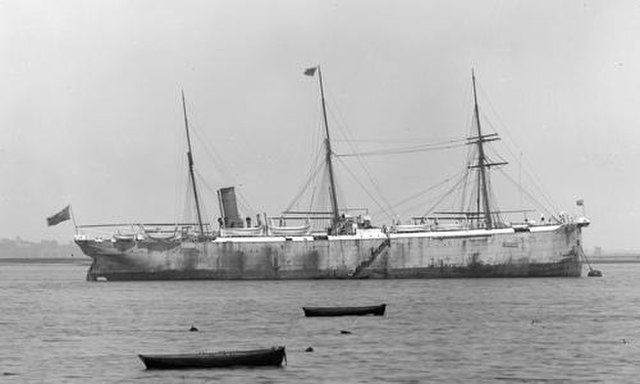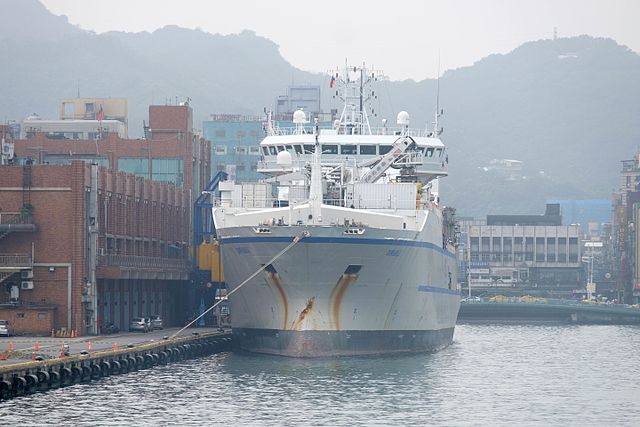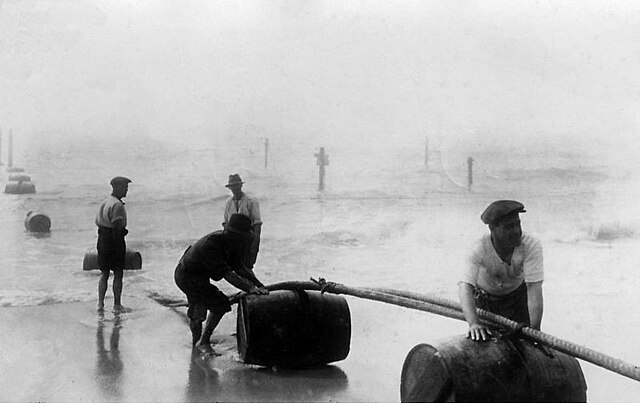A cable layer or cable ship is a deep-sea vessel designed and used to lay underwater cables for telecommunications, for electric power transmission, military, or other purposes. Cable ships are distinguished by large cable sheaves for guiding cable over bow or stern or both. Bow sheaves, some very large, were characteristic of all cable ships in the past, but newer ships are tending toward having stern sheaves only, as seen in the photo of CS Cable Innovator at the Port of Astoria on this page. The names of cable ships are often preceded by "C.S." as in CS Long Lines.
Modern cable layer CS Cable Innovator docked in Port Angeles, Washington
CS Dependable at Astoria, Oregon, a modern stern sheave design
CS Hooper, the world's first purpose-built cable-laying ship, built by C. Mitchell & Co of Newcastle-upon-Tyne in 1873, renamed CS Silvertown in 1881
CS Durable was operated by TE Subcom, docked at Keelung port in 2015. This reliance-class ship without bow sheaves.
Submarine communications cable
A submarine communications cable is a cable laid on the seabed between land-based stations to carry telecommunication signals across stretches of ocean and sea. The first submarine communications cables were laid beginning in the 1850s and carried telegraphy traffic, establishing the first instant telecommunications links between continents, such as the first transatlantic telegraph cable which became operational on 16 August 1858.
Submarine cables are laid using special cable layer ships, such as the modern René Descartes [fr], operated by Orange Marine.
A telegraph stamp of the British & Irish Magnetic Telegraph Co. Limited (c. 1862).
Operators in the submarine telegraph cable room at the GPO's Central Telegraph Office in London c. 1898
Landing of an Italy-USA cable (4,704 nautical miles long), on Rockaway Beach, Queens, New York, January 1925.





![Submarine cables are laid using special cable layer ships, such as the modern René Descartes [fr], operated by Orange Marine.](https://upload.wikimedia.org/wikipedia/commons/thumb/d/d1/France_Telecom_Marine_Rene_Descartes_p1150247.jpg/640px-France_Telecom_Marine_Rene_Descartes_p1150247.jpg)


